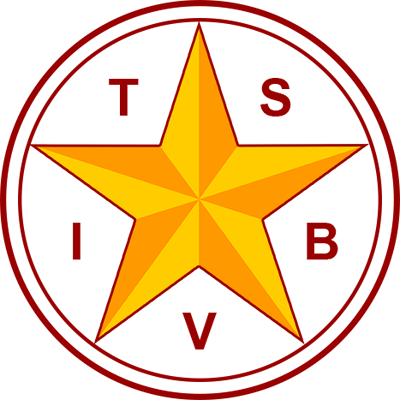BUILDINGS
All TSBVI school buildings shall be located on grounds that are well-drained and maintained in a sanitary condition. All buildings shall be properly ventilated and provided with an adequate supply of drinking water, an approved sewage disposal system, hand-washing facilities, a heating system, and lighting facilities, all of which shall conform with established standards of good public health engineering practices.
LUNCH ROOMS
The TSBVI cafeteria shall be maintained in accordance with state food and drug regulations.
CUSTODIAL SERVICES
All school buildings and appurtenances to buildings shall be maintained in a sanitary manner.
The Director of Operations shall ensure that:
- All campus buildings are cleaned and maintained in accordance with written quality standards approved by the Superintendent.
- Staff will receive a written description of the services that will be provided by the custodial staff and the schedule that will be used to provide the services.
- Annually, staff are surveyed to provide input as to whether custodial services were provided in accordance with the schedule of services.
Training for Custodial Employees
All full-time and part-time building custodians and janitors shall know the fundamentals of safety and school sanitation.
The Assistant Director of Operations for Maintenance shall ensure that each member of the custodial staff receives training at least every two years in the areas of chemical safety and building cleaning procedures.
Health and Safety Code 341.065
STRUCTURAL PEST CONTROL
When necessary, the School shall obtain pest control services for school buildings either by:
- Contracting with a business that has a structural pest control business license; or
- Requiring a School employee who is licensed as a certified noncommercial applicator, or technician, to perform the services.
Occupations Code 1951.459
Before treating a school building for pest control, the School shall ensure that the necessary signs and information for employees and parents of students are posted or made available.
Occupations Code 1951.455
INTEGRATED PEST CONTROL PROGRAM
The School shall adopt an integrated pest control management program in accordance with the requirements of the Texas Structural Pest Control Act. The program shall govern the School’s use of pesticides, herbicides, and other chemical agents for the purpose of controlling pests, rodents, insects, and weeds at School buildings and other school facilities.
PEST CONTROL POLICY REQUIREMENTS
The Superintendent shall develop a written pest management policy for all structural pest control activities conducted on school property based on the most current Structural Pest Control Board Integrated Pest Management document. This policy must be kept on file by the Superintendent and the Integrated Pest Management (IPM) coordinator. The following tenets of integrated pest management, as defined by the Environmental Protection Agency (EPA) shall be used as a basis for the School’s pest control program:
- Strategies that rely on the best combination of pest management tactics that are compatible with human health and environmental protection;
- Proper identification of pest problems;
- Monitoring programs to determine when pests are present or when pest problems are severe enough to justify corrective action;
- Use of non-chemical management strategies whenever practical; and
- Preferential use of the least toxic chemical controls when pesticides are needed.
For specific requirements regarding the application and classification of pesticides, refer to the
Structural Pest Control Law and Regulations Manual.
IPM COORDINATOR
A district shall designate an IPC coordinator(s). The person(s) designated as the School’s IPM coordinator(s) shall attend a TSPCB-approved IPM coordinator training course within 12 months of designation as IPM coordinator. The IPM coordinator shall oversee and be responsible for the following:
- Assisting in the coordination of pest management personnel and ensuring that all school employees who perform pest control have the necessary training, are equipped with the appropriate personal protective equipment, and have the necessary licenses for their pest management responsibilities;
- Maintaining a prioritized list of needed structural and landscape improvements.
- Working with administrators to ensure that local pest control proposal specifications are compatible with IPM principles, and that pest control contractors work under the guidelines of this policy;
- Ensuring that all pesticides used on the School’s property are in compliance with this policy and keeping current pesticide labels and Material Safety Data Sheets (MSDS);
- Authorizing least hazardous, effective emergency treatments with the approval of the certified applicator;
- Handling requests and inquiries relating to pest problems and maintaining records of any pesticide-related complaints;
- Ensuring that files are maintained regarding pesticide application records and that incidental use reports are in compliance with 19 TAC 595.17;
- Informing the School’s administrators and other personnel about IPM requirements (training, notice and posting, sanitation, pesticide storage);
- Maintaining a copy of the School’s IPM policy.
APPLICATION TIME FRAME
The IPM coordinator shall coordinate with appropriate School administrators or other designated and trained employees pesticide or herbicide applications in accordance with the law. The IPM coordinator(s) shall determine when an emergency situation exists and an exception to the 48-hour notice requirement may be made.
NO UNAUTHORIZED APPLICATION
No other employee or other person or entity shall be permitted to apply a pesticide or herbicide at a school facility without the prior approval of the IPM coordinator and other than in the manner prescribed by law and the School’s integrated pest management program.
CONTRACTS
All contracts for pest control services must be consistent with this pest management policy.
NONCOMPLIANCE
The School is subject to administrative penalties if it is found not in compliance with the rules established by the TSPCB.
Occupations Code 1951.212; 22 TAC 595.11
Adopted: 3/7/80
Amended: 6/29/84, 1/29/93, 11/19/93, 9/29/95, 5/23/97, 1/24/02, 1/25/08, 11/20/09
